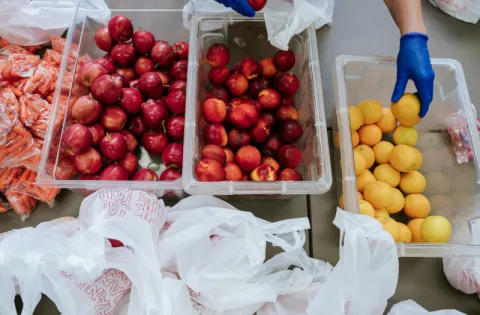The data is heartbreaking.
In its annual report, released this morning, the USDA shows just how monumental the progress had been in fighting childhood hunger over the last ten years.
The report, “Household Food Security in the United States in 2019,” which covers the 2019 calendar year (and is thus pre-COVID), showed the overall prevalence of food insecurity had fallen below the record highs of the Great Recession for the first time. The 2019 prevalence of food insecurity, at 10.5 percent, had continued to decline from a high of 14.9 percent in 2011 and was significantly below the pre-recession level (2007) of 11.1 percent. Just one year ago, 5.3 million children were considered food insecure, the lowest number on record since these statistics began being tracked in 1998 and nearly half the number who were food insecure in 2008.
These numbers are from 2019, a year that feels like another lifetime ago. This success was driven by economic growth and low unemployment, and the many successes of our No Kid Hungry campaign.
The Brookings Institution estimates that 14 million children today are food insufficient. The Center on Budget and Policy Priorities estimates that could be as high as 17 million. Analysis from the Northwestern Institute for Policy Research found Black and Latinx families with kids are even more likely to face hunger and food hardship.
The fact that such progress has been reversed is devastating to millions of families and children. But we’ve done it before and we can do it again. In 2010, Share Our Strength launched the No Kid Hungry campaign with a pledge to end childhood hunger in America. Over the decade, our efforts centered on helping kids start the school day with a healthy breakfast, ensuring they have nutritious meals when school is out, and advocating to strengthen and improve the nutrition programs they rely on.
Even in the midst of this pandemic, especially in the midst of this pandemic, it’s important to remember that childhood hunger is a solvable problem and that we were on the way to solving it. What we’ve witnessed over the past 6 months – greater public awareness and massive new public support, the effectiveness of national child nutrition waivers and flexibility in how kids are fed, and the greater need to address systemic causes of hunger and poverty – make it even more likely that we will eventually succeed.
It will be a long road. The systems of inequality that have led to this crisis’ outsized impact on low income Americans and communities of color will need to be addressed. We will need more funding, more collaboration, more innovation and more hard work. But we will fight to ensure that families and communities have the food they need to thrive and raise strong, healthy kids.
We can do this. I hope you will join us.



